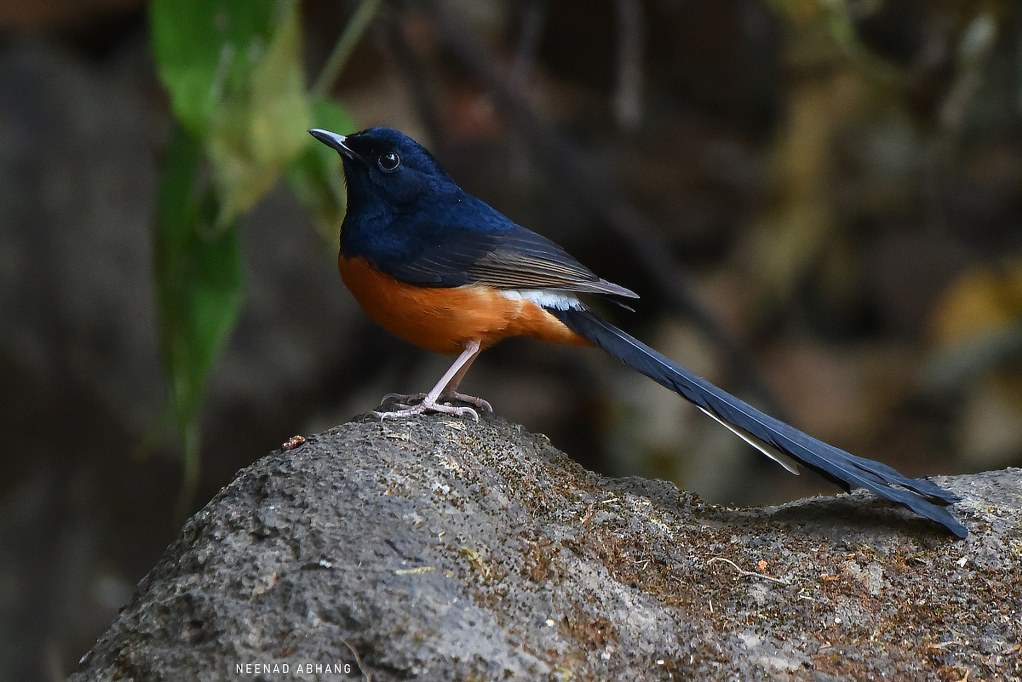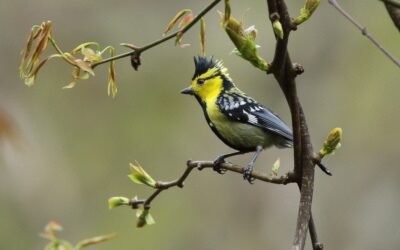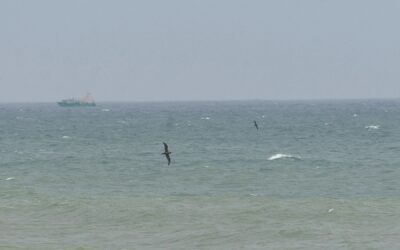Each year, eBird updates the base eBird/Clements checklist to take into account any changes resulting from newly discovered species or better taxonomic understanding—including species splits, lumps, name changes, and changes in sequence. Among these updates are species splits and lumps; name changes; and the insertion of new spuhs, slashes, and so on.
During the process, species names may appear in unexpected ways, other records may temporarily become subspecies groups, and your species totals may jump around.
The number of changes for the birders in South Asia are small, but some of them impact a large region.
Ongoing Updates
As we gear up for the full taxonomic update next month, you may notice some unusual changes, such as species names appearing differently, some records temporarily shifting to subspecies groups, or fluctuations in your species totals. Please do not adjust your data—just wait until the update is finalised in late October (we’ll notify you once it’s complete). Here are the changes relevant for us.
SPLITS
Large Cuckooshrike Coracina macei is split into:
- Oriental Cuckooshrike Coracina javensis [map] [media] [my records]
- Indian Cuckooshrike Coracina macei [map] [media] [my records]
This is a straightforward split for most states in peninsular India and Sri Lanka, where only Indian Cuckooshrike occurs. So, if you are from southern or central India, you need to use the new name Indian Cuckooshrike. It is also an easy one for the entire North-eastern India and Andaman Islands. You need to start using Oriental Cuckooshrike. If you are in the Himalayan region in northern India, you are likely to record Oriental Cuckooshrike. And if you are in the northern plains, where Large Cuckooshrike is rare, the default expected species is Indian Cuckooshrike. However, certain states where plains meet the Shivalik hills or Terai, like West Bengal, where both are likely, it is going to be tricky. Most of your records will be automatically transferred to the correct taxa based on the range.
Barn Owl Tyto alba is split into:
- Asian Barn Owl Tyto javanica [map] [media] [my records]
- European Barn Owl Tyto alba [map] [media] [my records]
- American Barn Owl Tyto furcata [map] [media] [my records]
There is only one species in the entire Indian subcontinent, and all records of our Barn Owls are of Asian Barn Owl. Note, Asian Barn Owl is also known as Eastern Barn Owl in the default Clements taxonomy. However, do not use “Western Barn Owl” or “European Barn Owl” while in India. All your records will get automatically transferred to the right taxa.
Herring Gull Larus argentatus is split into:
-
- American Herring Gull Larus smithsonianus [map] [media] [my records]
- European Herring Gull Larus argentatus [map] [media] [my records]
- Vega Gull Larus vegae [map] [media] [my records]
- Mongolian Gull Larus mongolicus [map] [media] [my records]
There is only one species known from the entire Indian subcontinent, and all records of erstwhile Herring Gull would belong to Mongolian Gull. Most Gull observers have been already using this subspecies group, expecting this split, and hence this change does not impact our community much. All existing records are already under Mongolian Gull, and will be automatically made as a species.
Spotted Nutcracker Nucifraga caryocatactes is split into:
- Spotted Nutcracker Nucifraga hemispila [map] [media] [my records]
- Northern Nutcracker Nucifraga caryocatactes [map] [media] [my records]
There is only one species known from the entire Indian subcontinent, and all records are of Spotted Nutcracker. Note, default Clements uses Southern Nutcracker for Spotted Nutcracker. Do not use “Northern Nutcracker” while in India. All existing records will be automatically transferred to the right species.
White-rumped Shama Copsychus malabaricus is split into:
- White-rumped Shama Copsychus malabaricus [map] [media] [my records]
- Sri Lankan Shama Copsychus leggei [map] [media] [my records]
This is a split that is likely to cause the least confusion. A new endemic species, Sri Lankan Shama, endemic to the island nation is recognised while all other records remain White-rumped Shama. So, while you are in Sri Lanka, use only Sri Lankan Shama. All existing records will be automatically transferred to the right species.
Buff-bellied Pipit Anthus rubescens is split into:
- American Pipit Anthus rubescens [map] [media] [my records]
- Buff-bellied Pipit Anthus japonicus [map] [media] [my records]
There is only one species known from the entire Indian subcontinent, and all records are of Buff-bellied Pipit. Note, default Clements uses Siberian Pipit for Buff-bellied Pipit. Do not use “American Pipit,” the previous default name of Clements, while in India. All existing records will be automatically transferred to the right species.
European Goldfinch Carduelis carduelis is split into:
- Western Goldfinch Carduelis carduelis [map] [media] [my records]
- Grey-crowned Goldfinch Carduelis caniceps [map] [media] [my records]
There is only one species known from the entire Indian subcontinent, and all records are of Grey-crowned Goldfinch. Do not use “Western Goldfinch” or its previous name “European Goldfinch” while in India. All existing records will be automatically transferred to the right species.
Red-rumped Swallow Cecropis daurica is split into:
- Eastern Red-rumped Swallow Cecropis daurica [map] [media] [my records]
- European Red-rumped Swallow Cecropis rufula [map] [media] [my records]
Almost the entire Indian peninsula has only one species, which is Eastern Red-rumped Swallow. However, there is a small summer breeding population of Red-rumped Swallows in the extreme north of our region, mostly around Gilgit-Baltistan and presumably also in Ladakh. This breeding population is of European Red-rumped Swallow. Identification details have not been fully worked out but notice the difference in the colour and pattern of red and white on the rump and the amount of striations on the lower parts.
LUMPS
Striated Swallow Cecropis striolata is lumped with:
- Eastern Red-rumped Swallow Cecropis daurica [map] [media] [my records]
In an about-turn, the Striated Swallow found in North-eastern India is now lumped with the Eastern Red-rumped Swallow which is found in the rest of the Indian subcontinent. While it may have made life easier for identification, we encourage birders to still report records of Striated Swallow as a distinct subspecies group, Eastern Red-rumped Swallow (Striated).
Buff-chested Babbler Cyanoderma ambiguum is lumped with:
- Rufous-fronted Babbler Cyanoderma rufifrons [map] [media] [my records]
In an about-turn, the Buff-chested Babbler (Indian Rufous-fronted Babbler) of the eastern subcontinent has been lumped with the extralimital Rufous-fronted Babbler to retain the old name. Birders familiar with the name Indian Rufous-fronted Babbler are least impacted, while birders familiar with Buff-chested Babbler may continue using the subspecies group Rufous-fronted Babbler (Buff-chested), though it is not mandatory as their ranges do not overlap.
REARRANGEMENTS
Blue-throated Flycatcher Cyornis rubeculoides is rearranged, and we have a new species:
- Hainan Blue Flycatcher Cyornis hainanus [map] [media] [my records]
The summer breeding population of Blue-throated Flycatcher in lowland forests of eastern Assam all have an orange notch in its throat. This population was previously considered a subspecies of Blue-throated Flycatcher Cyornis rubeculoides dialilaemus. Now, with the latest genetics, this population is considered a subspecies of Hainan Blue Flycatcher as Cyornis hainanus dialilaemus, a new species for India. We do not know how far its breeding range extends to western or central Assam. We also do not know its winter range. The presence of a notch in its throat itself is not considered diagnostic because some individuals with a notch also occur in the Western Himalaya, where only Blue-throated Flycatcher is known. What is the taxonomic status of ‘Notch-throated Flycatchers’ in peninsular India is also not resolved. All records of Blue-throated Flycatcher (Notch-throated) will be moved under a slash Blue-throated/Hainan Blue/Chinese Blue Flycatcher, except the summer records of both Blue-throated and Blue-throated (Notch-throated) from Eastern Assam, which will be treated as Hainan Blue Flycatcher.
Apart from these taxonomic changes, there are a few changes to English names as well as rearrangement of traditional genera. E.g., the Accipiter genus is now split into 4-5 new genera. Stay tuned; we will update this post with the full list of changes.
If you need the full list of taxonomy changes, including changes at family and genus level, please do visit www.birdtaxonomy.in in the interim. Birds of the World will soon be updated with these changes as well. Indian birders can access Birds of the World for free with their existing eBird/Cornell account.
Note: All the above links will be updated and active once the taxonomy update is completed.
*In addition to the above changes, there are some new spuhs, splashes, and new hybrids, intergrades.
* Note this is only a full listing of possible changes— we will update it once the final taxonomy is published! For those interested in investigating further, coming soon is a detailed description of the eBird taxonomy.
Important: While birding in India, we advise that you should set your eBird preferences (both on website and mobile app) to display both Common and Scientific Names, with common names set to ‘English (India)’ so that eBird uses names most familiar to Indian birders.
Additional links
What is eBird taxonomy and how it works?
Global eBird taxonomy update 2023
Downloadable checklist (Clements 2023)
All the links will be updated and active once the taxonomy update is completed.
Submit all Not Submitted checklists by 21 October. We strongly recommend submitting all “Not Submitted” checklists in eBird Mobile as soon as possible so we can implement taxonomic changes to all of your lists. eBird Mobile may not be able to correctly transition your data if you submit it after the taxonomic update. Open eBird Mobile, tap “Checklists” and submit anything under the “Not Submitted” tab by 21 October.
Originally published on 20 Oct 2024. Links updated on 29 Oct 2024.
Header Image: White-rumped Shama Copsychus malabaricus © Neenad Abhang / Macaulay Library




